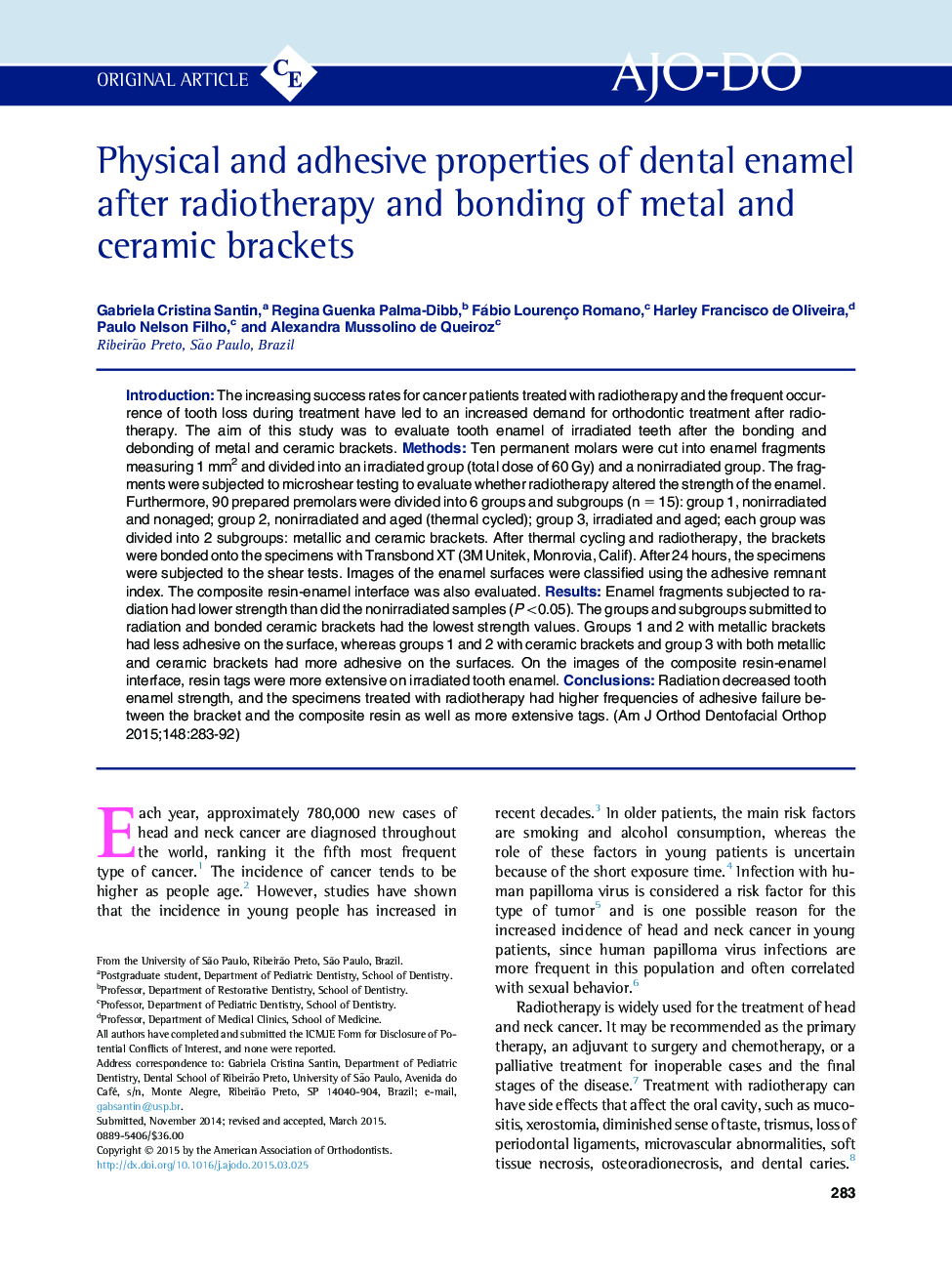| Article ID | Journal | Published Year | Pages | File Type |
|---|---|---|---|---|
| 3115610 | American Journal of Orthodontics and Dentofacial Orthopedics | 2015 | 10 Pages |
•Irradiated and nonirradiated teeth were bonded and submitted to microshear.•Irradiated enamel showed lower tensile strength when subjected to microshear.•Brackets bonded to irradiated enamel had significant shear strength values.•Irradiated teeth tended to debond at the bracket-composite interface.•Resin tags in the composite-enamel interface were deeper in the irradiated groups.
IntroductionThe increasing success rates for cancer patients treated with radiotherapy and the frequent occurrence of tooth loss during treatment have led to an increased demand for orthodontic treatment after radiotherapy. The aim of this study was to evaluate tooth enamel of irradiated teeth after the bonding and debonding of metal and ceramic brackets.MethodsTen permanent molars were cut into enamel fragments measuring 1 mm2 and divided into an irradiated group (total dose of 60 Gy) and a nonirradiated group. The fragments were subjected to microshear testing to evaluate whether radiotherapy altered the strength of the enamel. Furthermore, 90 prepared premolars were divided into 6 groups and subgroups (n = 15): group 1, nonirradiated and nonaged; group 2, nonirradiated and aged (thermal cycled); group 3, irradiated and aged; each group was divided into 2 subgroups: metallic and ceramic brackets. After thermal cycling and radiotherapy, the brackets were bonded onto the specimens with Transbond XT (3M Unitek, Monrovia, Calif). After 24 hours, the specimens were subjected to the shear tests. Images of the enamel surfaces were classified using the adhesive remnant index. The composite resin-enamel interface was also evaluated.ResultsEnamel fragments subjected to radiation had lower strength than did the nonirradiated samples (P <0.05). The groups and subgroups submitted to radiation and bonded ceramic brackets had the lowest strength values. Groups 1 and 2 with metallic brackets had less adhesive on the surface, whereas groups 1 and 2 with ceramic brackets and group 3 with both metallic and ceramic brackets had more adhesive on the surfaces. On the images of the composite resin-enamel interface, resin tags were more extensive on irradiated tooth enamel.ConclusionsRadiation decreased tooth enamel strength, and the specimens treated with radiotherapy had higher frequencies of adhesive failure between the bracket and the composite resin as well as more extensive tags.
